Похожие презентации:
The definition of management
1.
2. The Definition of Management
Management is the attainment oforganizational goals in an effective and
efficient manner through planning,
organizing, leading, and controlling
organizational resources.
For use with Management
by Richard Daft, Martyn Kendrick and Natalia Vershinina
1844808823 © 2010 Cengage Learning
3. The Four Management Functions
• Planning. Identifying goals and resources orfuture organizational performance.
• Organizing. Assigning tasks, delegating
authority and allocating resources.
• Leading. The use of influence to motivate
employees to achieve goals.
• Controlling. Monitoring activities and taking
corrective action when needed.
For use with Management
by Richard Daft, Martyn Kendrick and Natalia Vershinina
1844808823 © 2010 Cengage Learning
4. The Process of Management
For use with Managementby Richard Daft, Martyn Kendrick and Natalia Vershinina
1844808823 © 2010 Cengage Learning
5. Organizational Performance
• Organizations bring together knowledge,people, and raw materials to perform tasks
– Effectiveness is the degree to which the
organizations achieves goals
– Efficiency is the use of minimal resources to
produce desired output
• Organization is a social entity that is goal
directed and deliberately structured
For use with Management
by Richard Daft, Martyn Kendrick and Natalia Vershinina
1844808823 © 2010 Cengage Learning
6. The Systems View of Organizations
For use with Managementby Richard Daft, Martyn Kendrick and Natalia Vershinina
1844808823 © 2010 Cengage Learning
7. Contingency View of Management
For use with Managementby Richard Daft, Martyn Kendrick and Natalia Vershinina
1844808823 © 2010 Cengage Learning
8. Total Quality Management
W. Edward Deming, known as the father of the quality
movement
–
US initially scoffed at Deming
During the 1908s and 1990s, quality became a focus to
meet global competition
Four key elements of quality management:
1. Employee involvement
2. Focus on customer
3. Benchmarking
4. Continuous improvement
For use with Management
by Richard Daft, Martyn Kendrick and Natalia Vershinina
1844808823 © 2010 Cengage Learning
9. The Learning Organization
• Learning aids in the adaptation to change• Peter Senge began the discussion about the
learning organization
• All employees are engaged in identifying and
solving problems
• Learning increases the capacity to learn and
grow
• Move from efficiency to solving problems
For use with Management
by Richard Daft, Martyn Kendrick and Natalia Vershinina
1844808823 © 2010 Cengage Learning
10. Elements of a Learning Organization
For use with Managementby Richard Daft, Martyn Kendrick and Natalia Vershinina
1844808823 © 2010 Cengage Learning
11. Managing the Technology-Driven Workplace
• Most work is performed on computers in today’sworkplace
• Companies use technology to communicate and
collaborate
• Key technologies in today’s workplace:
– Supply Chain Management
– Customer Relationship Management
– Outsourcing
For use with Management
by Richard Daft, Martyn Kendrick and Natalia Vershinina
1844808823 © 2010 Cengage Learning
12. Levels of Corporate Culture
For use with Managementby Richard Daft, Martyn Kendrick and Natalia Vershinina
1844808823 © 2010 Cengage Learning
13. Environmentally Adaptive versus Un-adaptive Corporate Cultures
For use with Managementby Richard Daft, Martyn Kendrick and Natalia Vershinina
1844808823 © 2010 Cengage Learning
14. Four Types of Corporate Culture
For use with Managementby Richard Daft, Martyn Kendrick and Natalia Vershinina
1844808823 © 2010 Cengage Learning
15. Managerial Ethics
• Ethics can be difficult to define• Ethical issues are exceedingly complex
• Managers face a variety of difficult
situations
• Ethics fall between law and free choice
For use with Management
by Richard Daft, Martyn Kendrick and Natalia Vershinina
1844808823 © 2010 Cengage Learning
16. Criteria for Ethical Decision Making
• Utilitarian approach – moral behaviors should produce thegreatest good for the greatest number
• Individualism approach – acts are moral when they
promote the individual’s best long-term interests
• Moral Rights Approach – moral decisions are those that
best maintains the rights of those affected
• Justice Approach – decisions must be based on standards
of equity, fairness, and impartiality
• Disruptive Approach – different treatment of people should
not be based on arbitrary characteristics
For use with Management
by Richard Daft, Martyn Kendrick and Natalia Vershinina
1844808823 © 2010 Cengage Learning
17. Defining Justice
Disruptive Justice – different treatment ofpeople should not be based on arbitrary
characteristics.
Compensatory Justice – individuals
should be compensated for the cost of
their injuries by the party responsible.
For use with Management
by Richard Daft, Martyn Kendrick and Natalia Vershinina
1844808823 © 2010 Cengage Learning
18. Manager Ethical Choices
An important personal trait that mangers poses is theirstage of moral development
For use with Management
by Richard Daft, Martyn Kendrick and Natalia Vershinina
1844808823 © 2010 Cengage Learning
19. What is Corporate Responsibility?
Corporate Social Responsibility(CSR) is the obligation of
organization management to
make decisions and take actions
that will enhance the welfare
and interests of society as well
as the organization
For use with Management
by Richard Daft, Martyn Kendrick and Natalia Vershinina
1844808823 © 2010 Cengage Learning
20. What is Corporate Responsibility?
• Garriga and Mele suggest that researchinto CSR can be summarised within four
general categories:
- Instrumental theories which focus on profit
maximization
- Political theories which ascribe
responsibilities to organizations as part of
the social contract or ‘license to operate’
For use with Management
by Richard Daft, Martyn Kendrick and Natalia Vershinina
1844808823 © 2010 Cengage Learning
21. What is Corporate Responsibility?
- Integrative theories which suggest that the longterm success and profitability of organizations isclosely allied to the well-being of society.
- Ethical theories which apply ethics on
organizations and deduct the responsibility of
firms from universal and/or conventional norms
and values and fundamental moral principles
For use with Management
by Richard Daft, Martyn Kendrick and Natalia Vershinina
1844808823 © 2010 Cengage Learning
22. Organizational Stakeholders
Stakeholders are any group within or outside the organizationthat has a stake in the organization’s performance.
For use with Management
by Richard Daft, Martyn Kendrick and Natalia Vershinina
1844808823 © 2010 Cengage Learning
23. The Bottom of the Pyramid (BOP)
• Sometimes called base of the pyramid• Alleviate poverty and social ills while making profits
• Selling to the world’s poorest people
• 4 Billion people make up the lowest level of the
world’s economic pyramid
• These people have traditionally been underserved
• Companies can make money while addressing
global poverty, environmental destruction, social
decay and political instability
For use with Management
by Richard Daft, Martyn Kendrick and Natalia Vershinina
1844808823 © 2010 Cengage Learning
24. Overview of Goals and Plans
• A goal is a desired future state that theorganization attempts to realize
• A plan is a blueprint for goal achievement
• There are different levels of planning and
goals in an organization
• Goals at each level of the organization
guide the organization
For use with Management
by Richard Daft, Martyn Kendrick and Natalia Vershinina
1844808823 © 2010 Cengage Learning
25. Levels of Goals/Plans and their Importance
For use with Managementby Richard Daft, Martyn Kendrick and Natalia Vershinina
1844808823 © 2010 Cengage Learning
26. Characteristics of Goals and Plans
LegitimacySource of motivation and commitment
Resource allocation
Guides to action
Rationale for decisions
Standards of performance
For use with Management
by Richard Daft, Martyn Kendrick and Natalia Vershinina
1844808823 © 2010 Cengage Learning
27. The Organizational Planning Process
For use with Managementby Richard Daft, Martyn Kendrick and Natalia Vershinina
1844808823 © 2010 Cengage Learning
28. What is Strategic Management?
• Plans and actions that lead to superiorcompetitive standing
Who are our competitors and what are their
strengths and weaknesses?
Who are our customers?
What products or services should we offer?
What does the future hold for our industry?
How can we change the rules of the game?
For use with Management
by Richard Daft, Martyn Kendrick and Natalia Vershinina
1844808823 © 2010 Cengage Learning
29. Purpose of Strategy
• Strategy:– Plan of action
– Resource allocation
– Activities for dealing with the environment
– Achieving competitive advantage
• Strategy should:
– Exploit Core Competence
– Build Synergy
– Deliver Value
For use with Management
by Richard Daft, Martyn Kendrick and Natalia Vershinina
1844808823 © 2010 Cengage Learning
30. Three Levels of Strategy in Organizations
For use with Managementby Richard Daft, Martyn Kendrick and Natalia Vershinina
1844808823 © 2010 Cengage Learning
31. Levels of Strategy
What business arewe in?
Corporate-level strategy
How do we
compete?
Business-level strategy
How do we support
the business-level
strategy?
Functional-level strategy
For use with Management
by Richard Daft, Martyn Kendrick and Natalia Vershinina
1844808823 © 2010 Cengage Learning
32. Strategy Formulation Versus Execution
• Strategy Formulation–
–
–
–
Assess environment and internal problems
Planning
Decision making
Establishment of goals
• Strategy Execution
–
–
–
–
Directing resources
Accomplishing results
Changes in structure
Use managerial and organizational tools
For use with Management
by Richard Daft, Martyn Kendrick and Natalia Vershinina
1844808823 © 2010 Cengage Learning
33. The Strategic Management Process
For use with Managementby Richard Daft, Martyn Kendrick and Natalia Vershinina
1844808823 © 2010 Cengage Learning
34. SWOT Analysis
Assessment of internal and external factors• Organizational
strengths, weaknesses,
opportunities, and
threats
–
–
–
–
Reports
Budgets
Financial ratios
Employee Surveys
• External information
about opportunities
and threats
–
–
–
–
–
–
Customers
Government reports
Professional journals
Bankers
Consultants
Association meetings
For use with Management
by Richard Daft, Martyn Kendrick and Natalia Vershinina
1844808823 © 2010 Cengage Learning
35. Formulating Corporate-Level Strategy
• Portfolio Strategy– A diverse mix of business units
– Strategic Business Units (SBU) have different
products, mission, markets and competitors
• The BCG Matrix
– Organizes businesses along two dimensions—growth
and market share
• Diversification Strategy
– Movement into new lines of business
For use with Management
by Richard Daft, Martyn Kendrick and Natalia Vershinina
1844808823 © 2010 Cengage Learning
36. The BCG Matrix
For use with Managementby Richard Daft, Martyn Kendrick and Natalia Vershinina
1844808823 © 2010 Cengage Learning
37. Formulating Business-Level Strategy
• Porter’s Five Forces – analyzing acompany’s position in the industry
Potential New Entrants
Bargaining Power of Buyers
Bargaining Power of Suppliers
Threat of Substitute Products
Rivalry Among Competitors
For use with Management
by Richard Daft, Martyn Kendrick and Natalia Vershinina
1844808823 © 2010 Cengage Learning
38. Porter’s Five Forces
For use with Managementby Richard Daft, Martyn Kendrick and Natalia Vershinina
1844808823 © 2010 Cengage Learning
39. Implementing Change
• Need for Change. Many people are not willingto change. Managers must recognize the need
and make others aware.
• Resistance to Change. Getting others to
understand the need for change is the first
step.
– Self-interest
– Lack of Understanding and Trust
– Uncertainty
– Different Assessment and Goals
For use with Management
by Richard Daft, Martyn Kendrick and Natalia Vershinina
1844808823 © 2010 Cengage Learning
40. Force-Field Analysis
• Change was a result of the competition betweendriving and restraining forces.
• Driving forces are the problems and
opportunities that provide motivation to change.
• Restraining forces are the various barriers to
change.
• Managers should recognize the driving force
and the restraining forces.
• As barriers are reduced, behaviour will shift.
For use with Management
by Richard Daft, Martyn Kendrick and Natalia Vershinina
1844808823 © 2010 Cengage Learning
41. Personal Characteristics of Leaders
For use with Managementby Richard Daft, Martyn Kendrick and Natalia Vershinina
1844808823 © 2010 Cengage Learning
42. Behavioral Approaches to Leadership
• Ohio State Studies– Consideration: people-oriented behavior
– Initiating structure: task-behavior that directs work activities
• Michigan Studies
– Employee-centered leaders: focused on subordinates human
needs
– Job-centered leaders: meeting schedules, keeping costs low and
achieving productivity
• The Leadership Grid
– Built on both Ohio State and Michigan Studies
– Two-dimensional grid w/ five major management styles
For use with Management
by Richard Daft, Martyn Kendrick and Natalia Vershinina
1844808823 © 2010 Cengage Learning
43. The Leadership Grid
For use with Managementby Richard Daft, Martyn Kendrick and Natalia Vershinina
1844808823 © 2010 Cengage Learning
44. Contingency Approaches
Hersey and Blanchard’s Situational Theory– Characteristics of followers and determining
appropriate leadership behavior
– Adopt one of four leadership styles
Fiedler’s Contingency Theory
– Apply leader’s style to organizational situation
– Is situation favorable on unfavorable to the leader’s
style
For use with Management
by Richard Daft, Martyn Kendrick and Natalia Vershinina
1844808823 © 2010 Cengage Learning
45. Situational Theory: Hersey & Blanchard
Situational Theory:Hersey & Blanchard
For use with Management
by Richard Daft, Martyn Kendrick and Natalia Vershinina
1844808823 © 2010 Cengage Learning
46. How Leader Style Fits the Situation
For use with Managementby Richard Daft, Martyn Kendrick and Natalia Vershinina
1844808823 © 2010 Cengage Learning
47. Path goal theory
For use with Managementby Richard Daft, Martyn Kendrick and Natalia Vershinina
1844808823 © 2010 Cengage Learning
48. Substitutes and Neutralizers for Leadership
For use with Managementby Richard Daft, Martyn Kendrick and Natalia Vershinina
1844808823 © 2010 Cengage Learning
49. Charismatic Leadership
• Leadership can inspire and motivate people• Charismatic Leaders
Lofty visions
Ability to understand and empathize
Empowering and trusting subordinates
• Charismatic leaders are less predictable and
create an environment of change
For use with Management
by Richard Daft, Martyn Kendrick and Natalia Vershinina
1844808823 © 2010 Cengage Learning
50. Transformational vs. Transactional Leadership
• Transformational leaders drive innovation andchange
– Recognize needs of followers
– Inspire others to believe in themselves
• Different than transactional leadership
– Initiate structure, provide rewards
– Excel in management functions
• Transformational leaders have positive impact on
followers
For use with Management
by Richard Daft, Martyn Kendrick and Natalia Vershinina
1844808823 © 2010 Cengage Learning
51. Followership
Leaders can developunderstanding of
followers
Good followers have
leadership traits
Effective followers are
independent, critical
thinkers
For use with Management
by Richard Daft, Martyn Kendrick and Natalia Vershinina
1844808823 © 2010 Cengage Learning
52. Power
• Position Power– Legitimate Power: formal position
– Reward Power: authority to reward others
– Coercive Power: authority to punish or recommend
Power and
influence are
not the same.
• Personal Power
– Expert Power: knowledge and skills
– Referent Power: personal characteristics
• Other Source of Power
– Personal Effort: initiative
– Network of Relationships: cultivated people resources
– Information: access to information
For use with Management
by Richard Daft, Martyn Kendrick and Natalia Vershinina
1844808823 © 2010 Cengage Learning
53. Interpersonal Influence Tactics
Use rational persuasionMake people like you
Rely on the rule of reciprocity
Develop allies
Ask for what you want
Make use of higher authority
Reward the behaviors you want
For use with Management
by Richard Daft, Martyn Kendrick and Natalia Vershinina
1844808823 © 2010 Cengage Learning
54. A Simple Model of Motivation
• Motivation can lead to behaviors that reflect highperformance within organizations.
• High employee motivation is related to high
organizational performance and profits.
For use with Management
by Richard Daft, Martyn Kendrick and Natalia Vershinina
1844808823 © 2010 Cengage Learning
55. Content Perspectives on Motivation
These theories emphasize the needs thatmotivate people.
• Hierarchy of Needs Theory
• ERG Theory
• Two-Factor Theory
• Acquired Needs Theory
For use with Management
by Richard Daft, Martyn Kendrick and Natalia Vershinina
1844808823 © 2010 Cengage Learning
56. Maslow’s Hierarchy of Needs
According to Maslow’s Theory, low-order needs take priority—they mustbe satisfied before higher-order needs are activated.
For use with Management
by Richard Daft, Martyn Kendrick and Natalia Vershinina
1844808823 © 2010 Cengage Learning
57. Maslow’s Hierarchy of Needs
Once a need is satisfied, it declines inimportance and the next higher need is activated
There are opportunities for fulfillment off the job
and on the job in each of the five levels of needs
For use with Management
by Richard Daft, Martyn Kendrick and Natalia Vershinina
1844808823 © 2010 Cengage Learning
58. ERG Theory
• ERG is a simplification of Maslow.• Three categories of needs:
– Existence needs. The needs for physical
well-being.
– Relatedness needs. The needs for
satisfactory relationships with others.
– Growth needs. The needs that focus on
the development of human potential and the
desire for personal growth.
For use with Management
by Richard Daft, Martyn Kendrick and Natalia Vershinina
1844808823 © 2010 Cengage Learning
59. Two-Factor Motivation Theory
For use with Managementby Richard Daft, Martyn Kendrick and Natalia Vershinina
1844808823 © 2010 Cengage Learning
60. Acquired Needs Theory
• Need for Achievement. desire to accomplishsomething difficult, master complex tasks, and
surpass others.
• Need for Affiliation. desire to form close personal
relationships, avoid conflict, and establish warm
friendships.
• Need for Power. desire to influence or control
others.
For use with Management
by Richard Daft, Martyn Kendrick and Natalia Vershinina
1844808823 © 2010 Cengage Learning
61. Process Perspectives on Motivation
These theories explain how people select behavioralactions to meet their needs.
• Goal-Setting Theory
• Equity Theory
• Expectancy Theory
For use with Management
by Richard Daft, Martyn Kendrick and Natalia Vershinina
1844808823 © 2010 Cengage Learning
62. Goal-Setting
• Specific, challenging targets significantlyenhance people’s motivation and
performance.
• Managers can improve performance by
setting specific goals.
• Goal-setting theory requires:
– Specific Goals
– Difficult Goals
– Acceptance
– Feedback
For use with Management
by Richard Daft, Martyn Kendrick and Natalia Vershinina
1844808823 © 2010 Cengage Learning
63. Equity Theory
Focuses on individuals’ perceptionsof how fairly they are treated
compared with others
Motivated to seek social equity in the
rewards they expect for performance
For use with Management
by Richard Daft, Martyn Kendrick and Natalia Vershinina
1844808823 © 2010 Cengage Learning
64. Methods for Reducing Perceived Inequities
• Change Work Efforts• Change Outcomes
• Change Perceptions
• Leave the Job
Employees evaluate the perceived equity of their
rewards compared to others’.
For use with Management
by Richard Daft, Martyn Kendrick and Natalia Vershinina
1844808823 © 2010 Cengage Learning
65. Expectancy Theory
Motivation depends on individuals’expectations about their ability to
perform tasks and receive desired
rewards
Focuses on the thinking process
that individuals use to achieve
rewards
Based on the effort, performance,
and desirability of outcomes
For use with Management
by Richard Daft, Martyn Kendrick and Natalia Vershinina
1844808823 © 2010 Cengage Learning
66. Major Elements of Expectancy Theory
Valence – the value or attraction an individual has for an outcomeFor use with Management
by Richard Daft, Martyn Kendrick and Natalia Vershinina
1844808823 © 2010 Cengage Learning
67. Reinforcement Perspective on Motivation
For use with Managementby Richard Daft, Martyn Kendrick and Natalia Vershinina
1844808823 © 2010 Cengage Learning
68. Job Design for Motivation
Job Design - application of motivationaltheories to the structure of work
For use with Management
by Richard Daft, Martyn Kendrick and Natalia Vershinina
1844808823 © 2010 Cengage Learning
69. Job Design for Motivation
Job Simplification - improve task efficiencyby reducing the number of tasks
Job Rotation - moving employees from one
job to another to provide them with variety and
stimulation
Job Enlargement - combining a series of
tasks into one new, broader job to give
employees variety and challenge
For use with Management
by Richard Daft, Martyn Kendrick and Natalia Vershinina
1844808823 © 2010 Cengage Learning
70. Job Design for Motivation
Job Enrichment - incorporatingachievement, recognition, and other highlevel motivators into the work
Work redesign – altering jobs to
increase both the quality of employee’s
work experience and their productivity
For use with Management
by Richard Daft, Martyn Kendrick and Natalia Vershinina
1844808823 © 2010 Cengage Learning
71. Job Characteristics Model
For use with Managementby Richard Daft, Martyn Kendrick and Natalia Vershinina
1844808823 © 2010 Cengage Learning
72. The Meaning of Control
• The systematic process of regulatingorganizational activities to meet
expectations
– Established plans
– Targets
– Standards
For use with Management
by Richard Daft, Martyn Kendrick and Natalia Vershinina
1844808823 © 2010 Cengage Learning
73. Choosing Standards and Measures
• Common forms of control include financialperformance
– Sales
– Revenue
– Profit
• There is a growing need to measure
intangible aspects of performance
– Customer Service
– Customer Retention
For use with Management
by Richard Daft, Martyn Kendrick and Natalia Vershinina
1844808823 © 2010 Cengage Learning
74. The Balanced Scorecard
• Comprehensive management controlsystem that balances traditional financial
measures with:
– Customer Service
– Internal Business Processes
– Learning and Growth
For use with Management
by Richard Daft, Martyn Kendrick and Natalia Vershinina
1844808823 © 2010 Cengage Learning
75. Review the Scorecard
For use with Managementby Richard Daft, Martyn Kendrick and Natalia Vershinina
1844808823 © 2010 Cengage Learning
76. Steps of Feedback Control
Establish Standards of PerformanceMeasure Actual Performance
Compare Performance to Standards
Take Corrective Action
For use with Management
by Richard Daft, Martyn Kendrick and Natalia Vershinina
1844808823 © 2010 Cengage Learning
77. Feedback Control Model
For use with Managementby Richard Daft, Martyn Kendrick and Natalia Vershinina
1844808823 © 2010 Cengage Learning
78. Open-Book Management
• Information sharing• Teamwork
• Encourage active participation
• Commitment to goals
• Open-book management allows employees to
see for themselves—through charts, computer
printouts, meetings, and so forth—the financial
condition of the company
For use with Management
by Richard Daft, Martyn Kendrick and Natalia Vershinina
1844808823 © 2010 Cengage Learning




























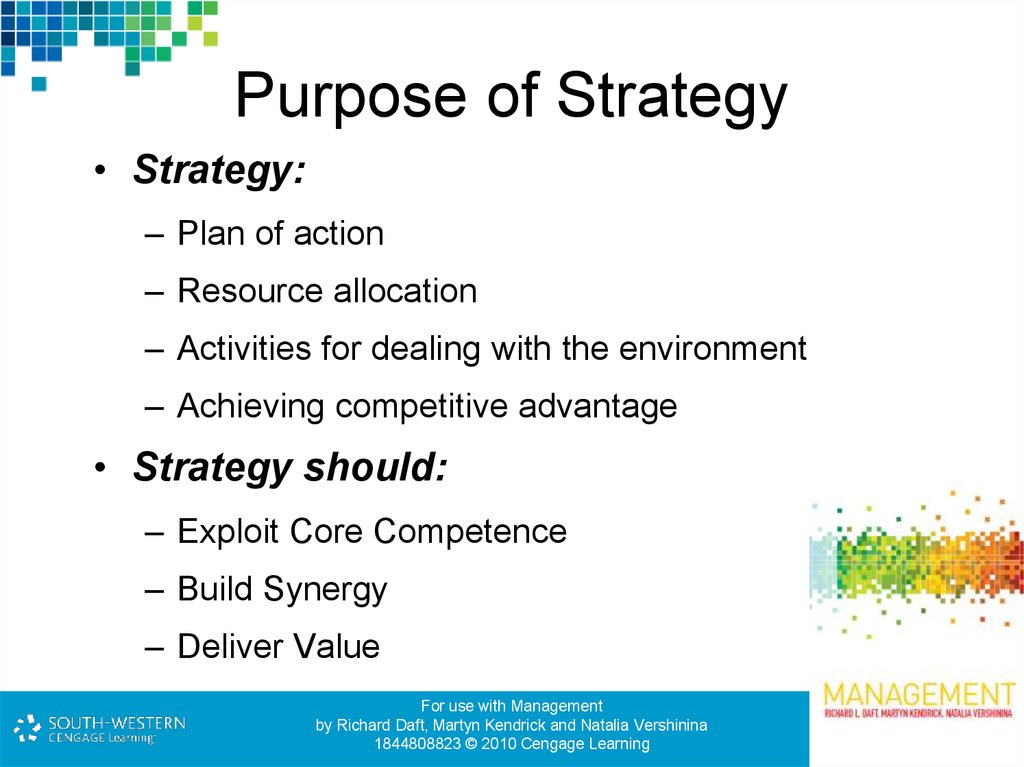





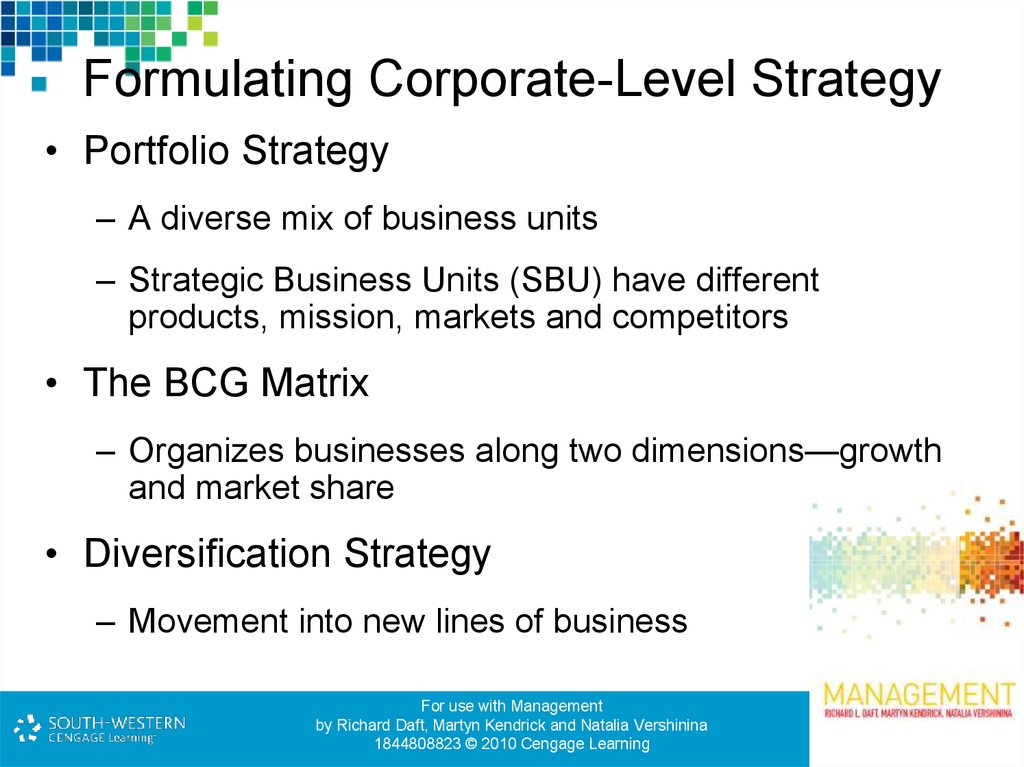







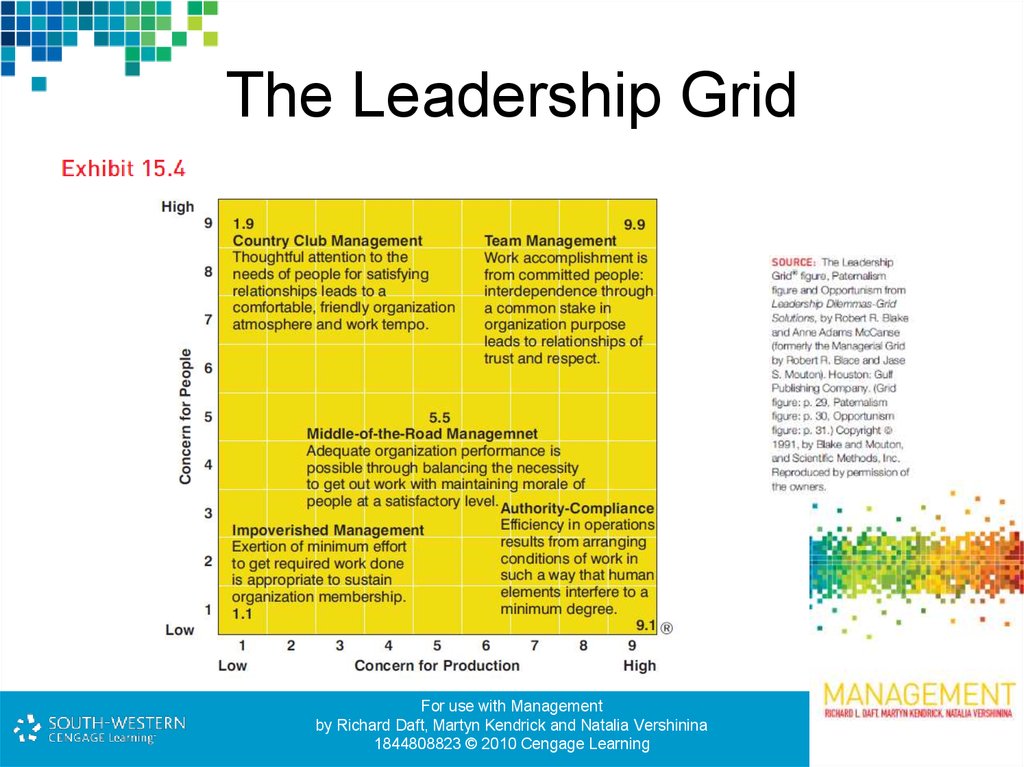


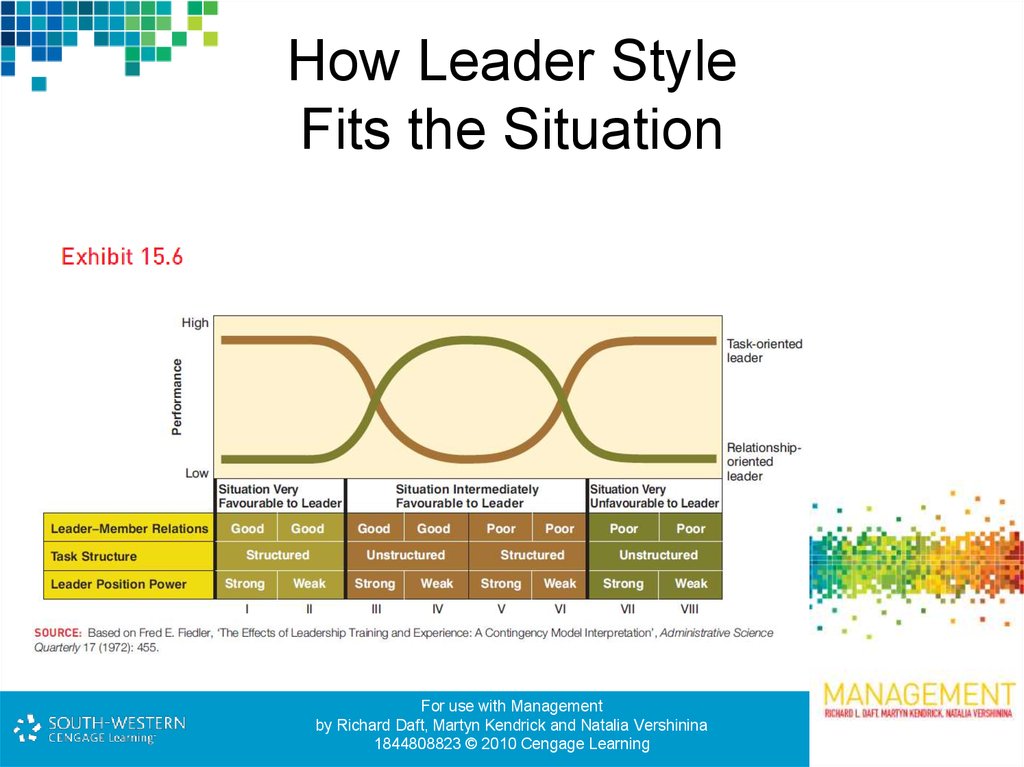



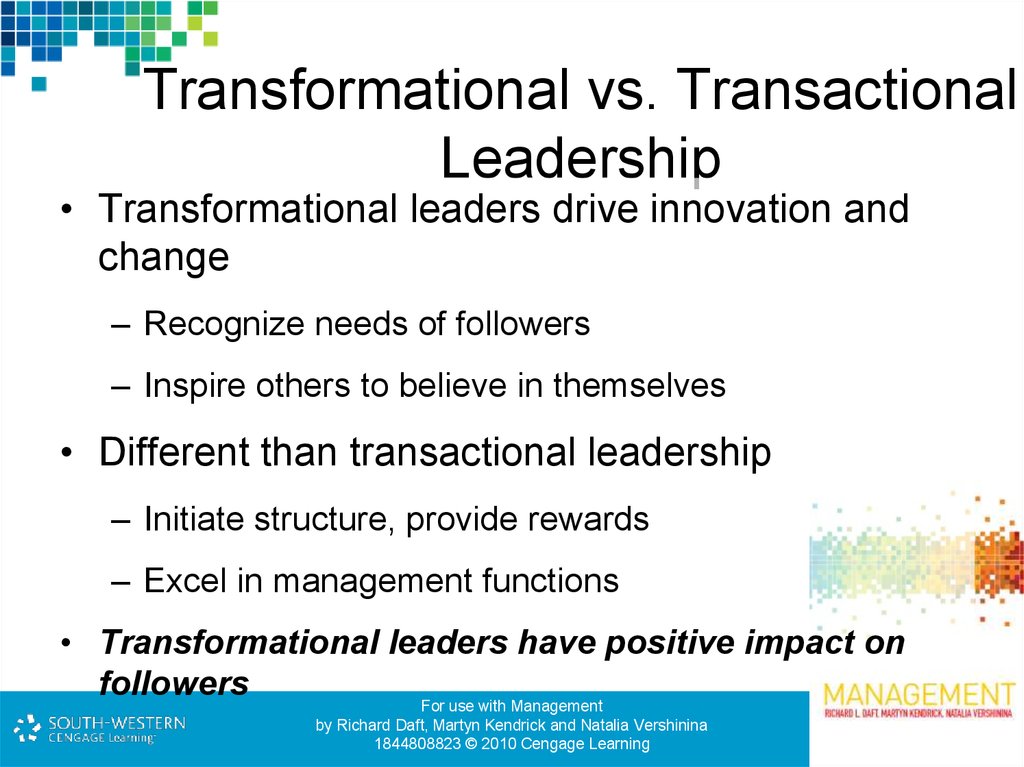
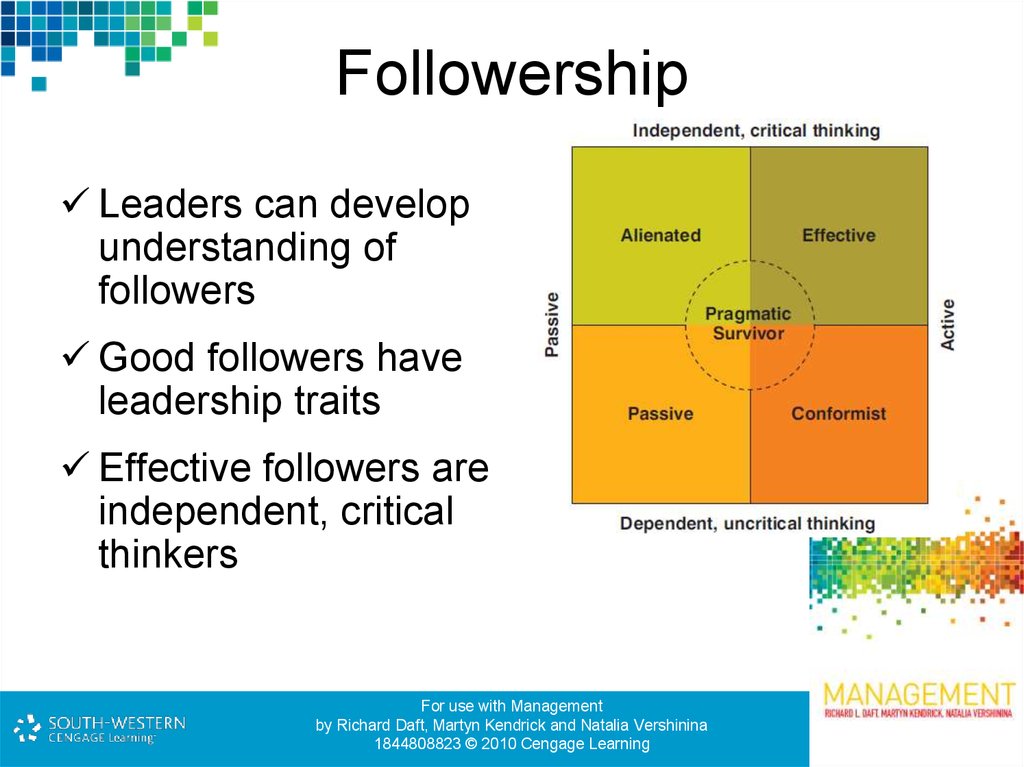
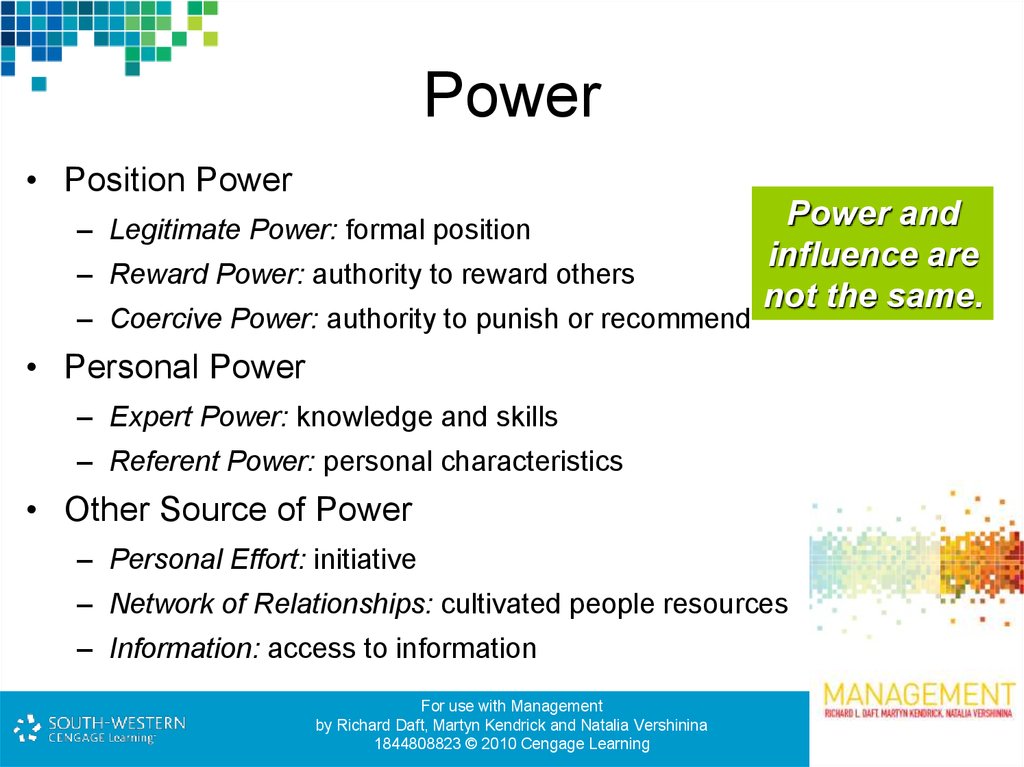

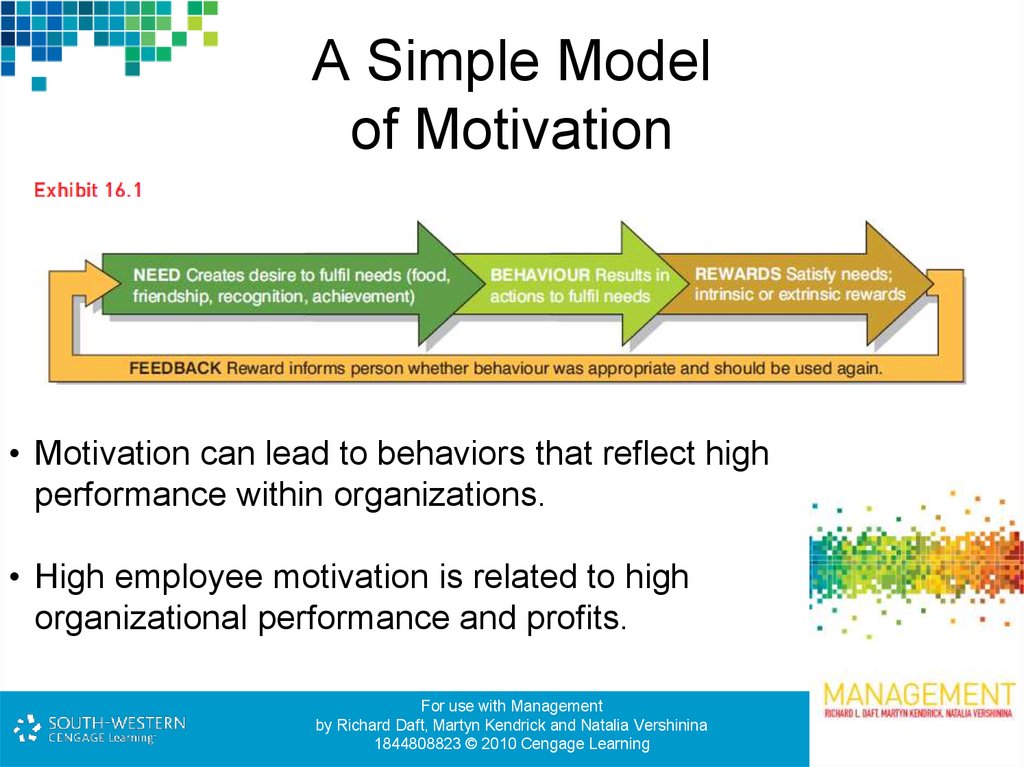



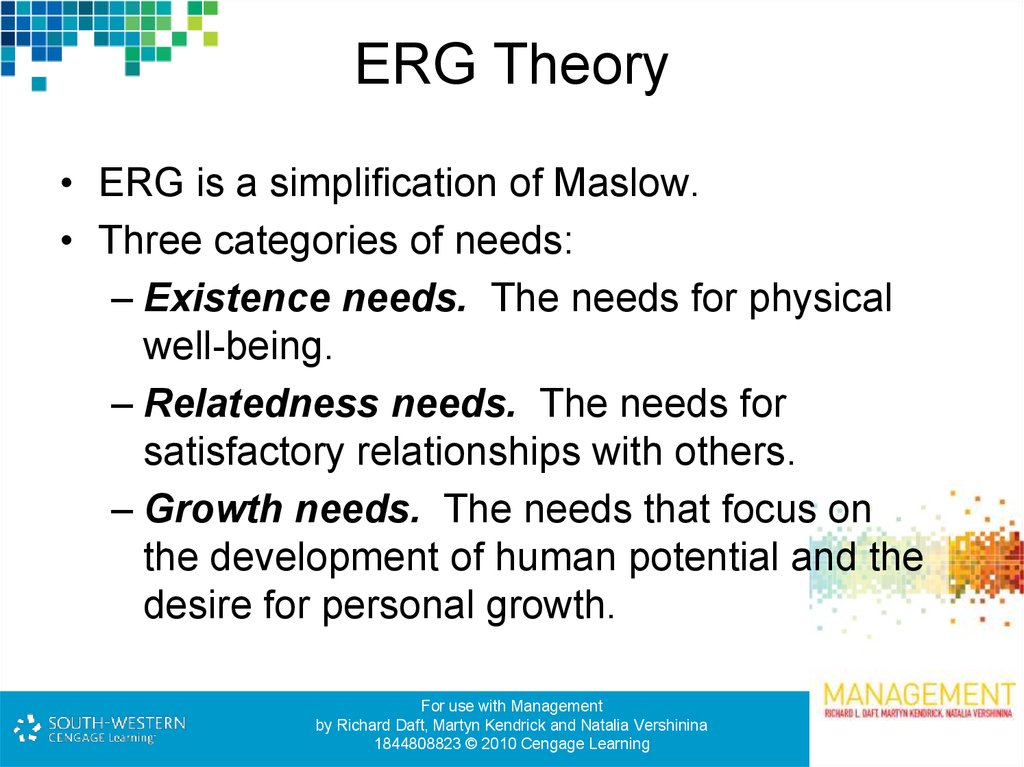









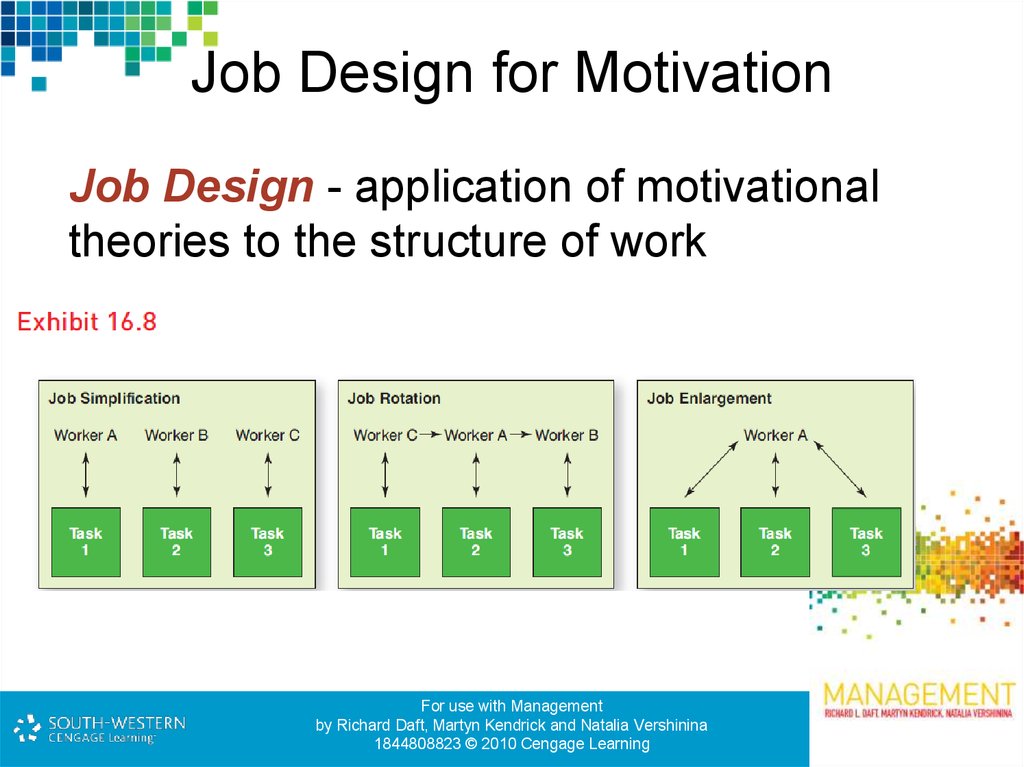

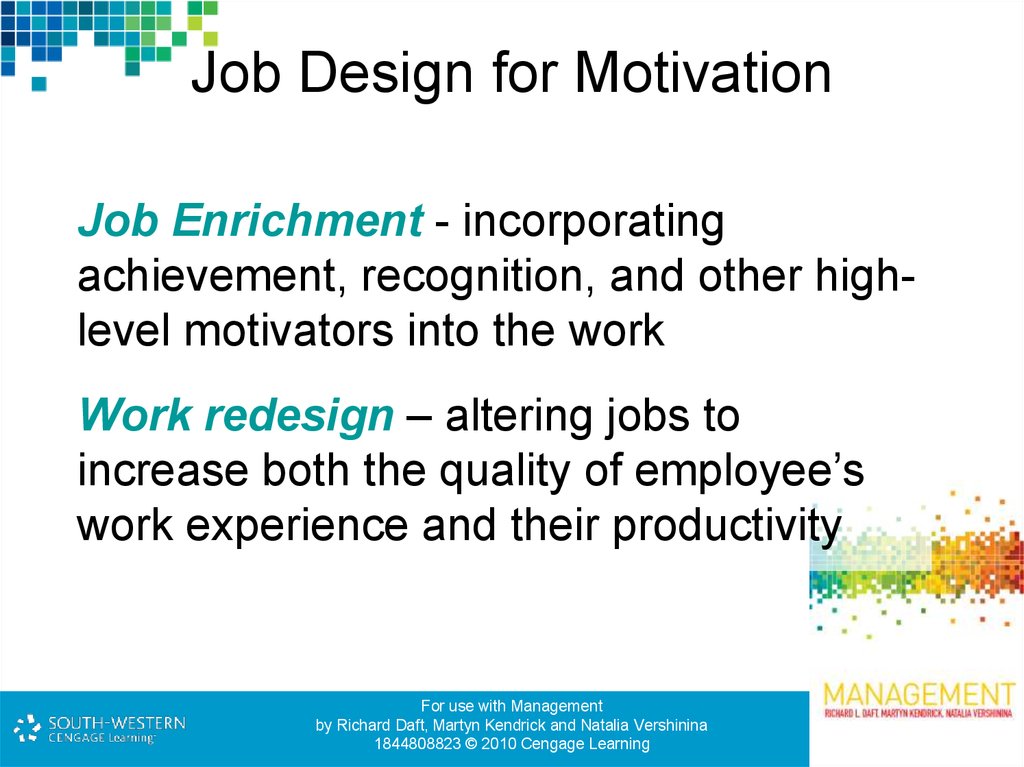




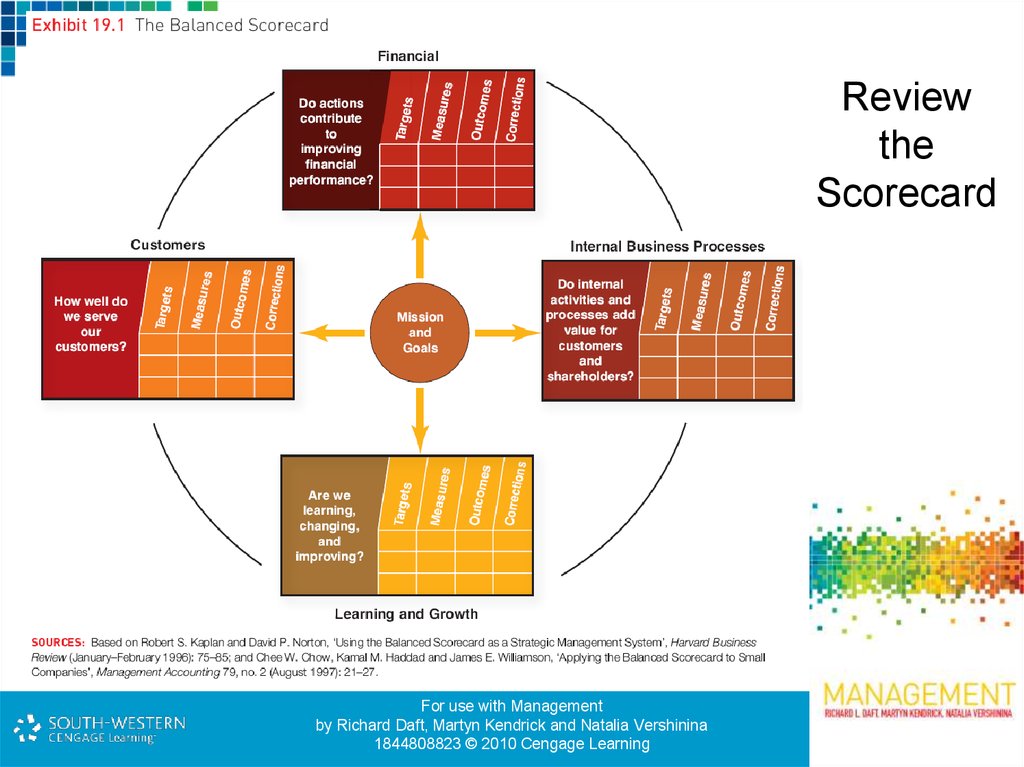



 Менеджмент
Менеджмент








